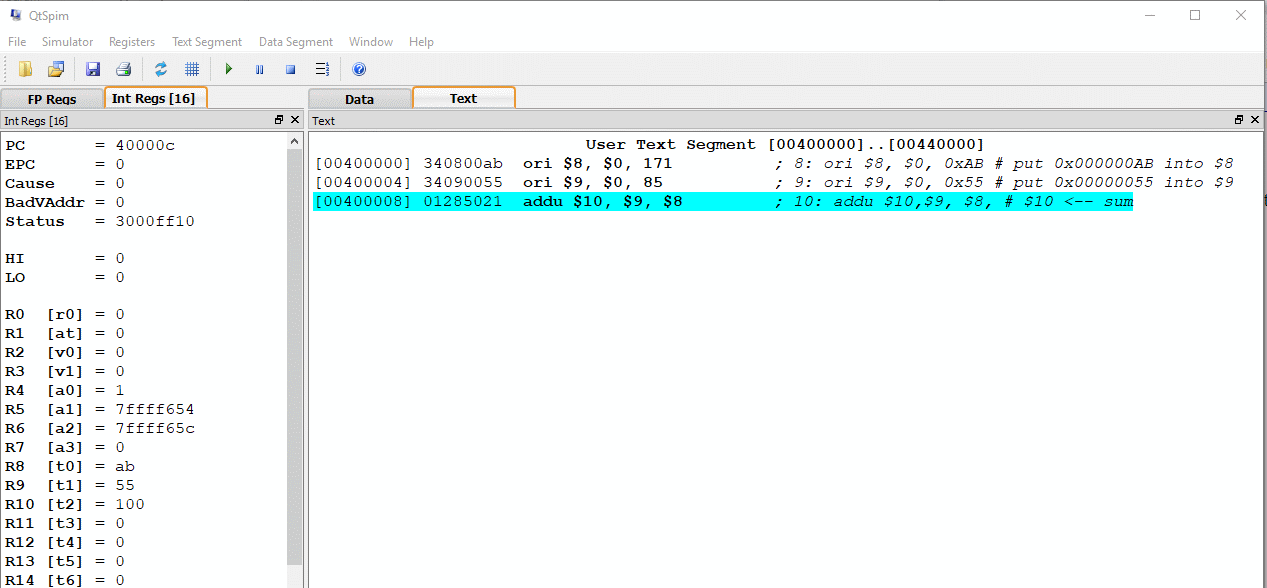No. Operand registers are not changed unless one is also the destination register.

Here is a run of the program. The results are as expected. The source code is shown at the right of the text section. In the middle column of the text section the decimal equivalents of the immediate operands is shown in the instructions. The registers are shown at the left.
To express an immediate operand using decimal notation omit the leading "0x". The following puts the same bit pattern in the registers as the previous assembly language:
ori $8, $0, 171 # put 171 into $8
#(this is 0xAB)
ori $9, $0, 85 # put 85 into $9
#(this is 0x55)
addu $10,$9, $8 # $10 gets sum
Of course, the immediate operand in the machine instruction is a 16-bit pattern. The assembler allows you to specify this pattern using the hexadecimal pattern name, or a decimal integer that is converted into a 16 bit pattern.
The job of the assembler is to construct machine instructions based on the assembly language in the source file. Bit patterns in the machine instructions may be specified in a variety of ways.
The SPIM display shows your source code after the ; in the right of the display.
It shows main storage addresses inside brackets [],
followed by the 32-bit machine instruction that starts at the address.
Then it translates from machine instructions back to an equivalent machine language statement
shown in the middle column.
Immediate operands are shown in their equivalent decimal here, which may not be what you wrote.
Expressed in hex, the program computes the pattern 0xAB + 0x55 = 0x100.
The register display shows this in register R10.
Expressed in decimal, the program computed 171 + 85 = 256. Click on the "Registers" tab in the SPIM display to change the display to decimal. Of course, this just changes the display. The registers continue to hold the same bit patterns as before.
(Review:) Can a negative const
be used with the instruction:
ori $d,$0,const